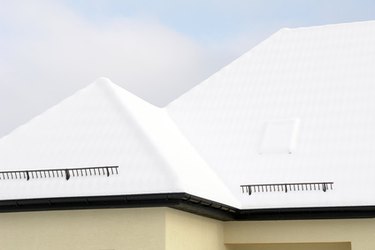
Butyl rubber caulk and urethane caulk are both used to seal cracks and joints from water damage primarily in outdoor settings. However, butyl caulk and urethane caulk are different products with different uses, application techniques and drying times.
Uses
Video of the Day
Butyl caulk is typically used to seal downspouts and gutters. It also is often used on the foundation of houses and other buildings, especially below the soil surface where the foundation may come in contact with moisture. Urethane caulk adheres to nearly all surfaces, including vinyl siding, aluminum, masonry and wood. It is best employed when sealing cracks in these materials.
Video of the Day
Post-Application Implications
Butyl caulk never completely hardens, so it works well in areas that might be prone to slight movement, such as a rain gutter or roof flashing. Urethane has a low shrink rate and good water resistance.
Appearance
Butyl caulk can be difficult to apply in a clean and neat manner. It can take on the appearance of tar, but it can be painted over. Urethane is prized because it can seal cracks and also later be painted to match the area.
Drawbacks
Urethane caulk takes longer to dry than some other types of caulk and sealant. Typically, it should not be painted over for at least two days. If using an oil-based paint, urethane should dry for at least seven days before painting. Butyl can be messy. It often won't stay in a tight bead, meaning it spreads out over a surface.
Cleanup
Urethane caulk sticks to almost everything, meaning it should be applied with care. It must be cleaned up with a solvent such as mineral spirits. A solvent also is needed to clean up butyl caulk.